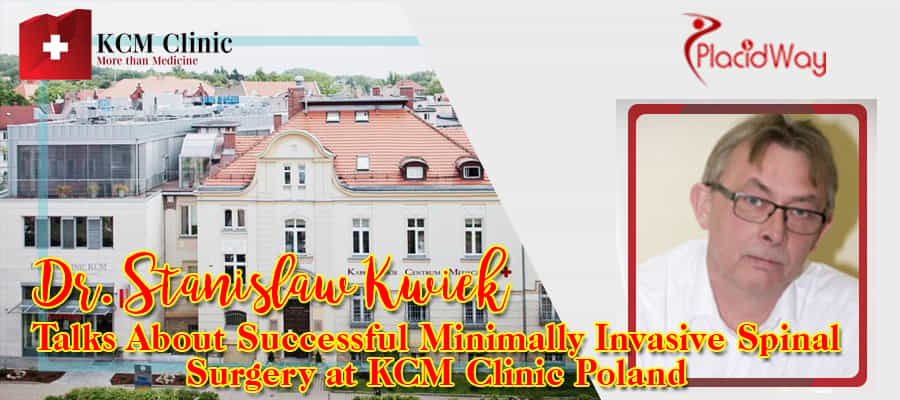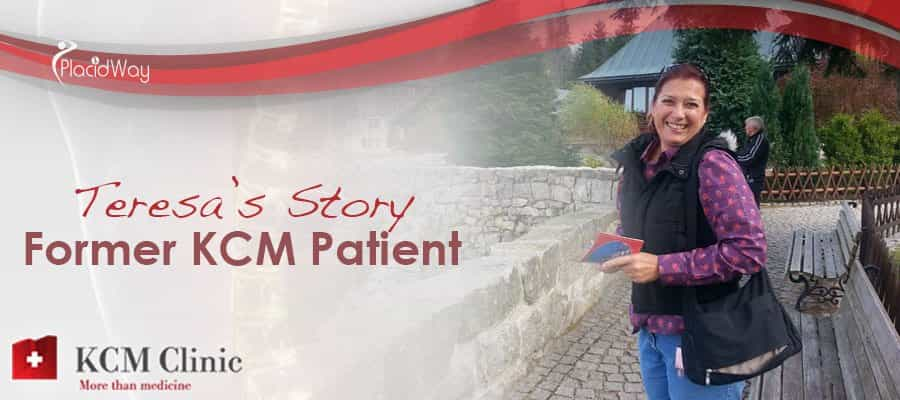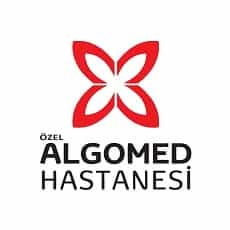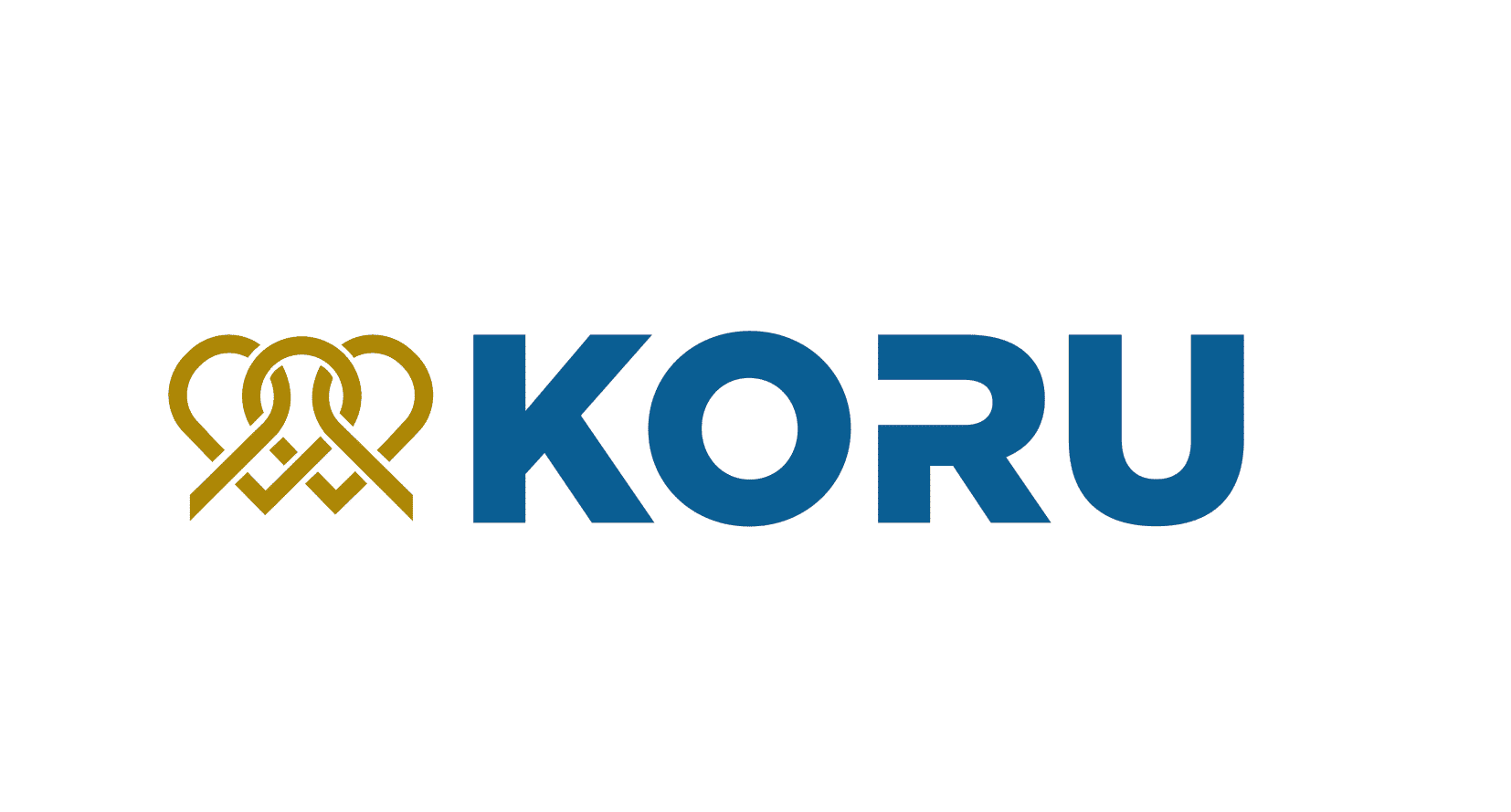
Successful Minimally Invasive Spinal Surgery at KCM Clinic Poland
Associate Professor Stanislaw Kwiek, Assistant Professor at the Medical University of Silesia manages Lower Silesian Center of Minimally Invasive Neurosurgery of the Spine established at KCM in Jelenia Góra in 2011.
KCM hospital holds the most innovative equipment and tools to ensure successful minimally invasive endoscopic spinal surgery. The advantages of these treatments is that they permit patients quickly recovery, ensuring the minimization of possible complications. Also, KCM combines perfectly surgical therapy with rehabilitation and physiotherapy.
The rehabilitation specialist of the spine, Krzysztof Suszy?ski PhD, MD, Adjunct Professor of Department of Physiotherapy, Medical University of Silesia coordinates the Rehabilitation Department. Docent Kwiek is one of the most experienced operators in minimally invasive endoscopic neurosurgery not only in Poland but also in Europe, thus patients with chronic back pain come to KCM Clinic from different corners of Poland and from abroad - Germany, UK. Britain, and most recently - the USA - from the state of Colorado and Oregon as well as Sri Lanka, being in the safe hands of Polish specialists.
The KCM team lead by Docent Kwiek is known to have performed successfully more than 700 minimally invasive neurosurgical procedures. There are a few surgical methods that are the most commonly used in KCM: stabilization of the spine with the use of dynamic flexible implants, removal of the herniated disk or protuberance as well as so called "Sequestration Disk" by foraminotomy from the posterolateral surgical approach. This operation is performed using endoscopic visualization.
What implies a minimally invasive method of hernia or disc bulge done endoscopically through the posterior-lateral access?
- The operation raises the issues that is performed without exposure to the spinal cord, spinal nerves and other anatomical parts of the spinal canal. But the upside is that the posterolateral access guarantees patient safety and lowers the chances of complications of the methods used so far in the invasive open neurosurgery of the spine. In this case, the surgeon does not have to expose the spine to remove a herniated disk. Therefore, complications such as spinal instability and postoperative adhesions, which are often a complication of conventional treatments, are not met in this kind of surgery.
How long does the surgery last? When can the patient leave hospital and return to work?
- Usually, the procedure takes approx. 30 min. The very next day the patient is free go home and can return to work to full function after 2-4 weeks.
What type of anesthesia is used during the surgery?
- For the procedures, there is performed local intravenous anesthesia. Therefore, the patient is fully conscious during the procedure, talking to me and being able to notify me about any of their symptoms during the operation. This practice helps us avoid any complications that may occur during operation with general anesthesia.
What complications can occur during the endoscopic removal of herniated disc?
- Having the experience of performing hundreds of operations with this method, only 2 small infectious complications occurred - both cured successfully with antibiotic intravenously.
What other minimally invasive back surgeries can be performed at KCM?
- Our clinic provides various minimally invasive procedures, both lumbar, thoracic and cervical of the spine. The decision about the right method is made during an interview with the patient based on the results of imaging studies, clinical trials and ailments.
Patient’s Story

Teresa R. from USA / Oregon had suffered for years from numbing neck pain and lumbar back pain. She decided to undergo the surgery of implantation of an artificial disc in the cervical spine. However, pain and discomfort associated with normal operation didn’t disappear and it affected her everyday life..
She was also diagnosed with the chronic spinal pain syndrome in the lumbo-sacral part. Similarly to a previous patient from USA, Sean, Teresa was also searching for a professional treatment abroad. Participating on a medical conference in Washington, during the presentation, she decided upon KCM Clinic, and came to Poland. It was the right decision.
After receiving the results of MRI and consulting with Assistant Prof. Stanis?aw Kwiek, she decided to undergo the minimally invasive surgery: a cervical coblation and lumbar spine procedure called Laser PLDD. The patient was taken by surprise by the rapid improvement after the surgery and she showed herself very pleased with the standard of medical service at KCM, the rehabilitation care, the professionalism and the true commitment of medical staff.
Teresa experienced limitations in mobility and lifting the left hand before cervical ablation and Laser PLDD procedures. But only after two days after the surgery, most of the problems disappeared including pain. Teresa returned to the US happy and she made a full recovery, going back to an active life.
After a week stay in Poland, Teresa had a very positive feedback about the treatment and the whole expedition to Poland in Jelenia Góra and at KCM Clinic.
If you need more information regarding the successful minimally invasive endoscopic spinal surgery offered by KCM Clinic, do not hesitate to contact us!




.png)



.png)
.png)
.png)






Share this listing